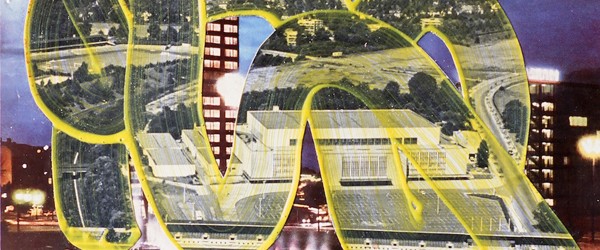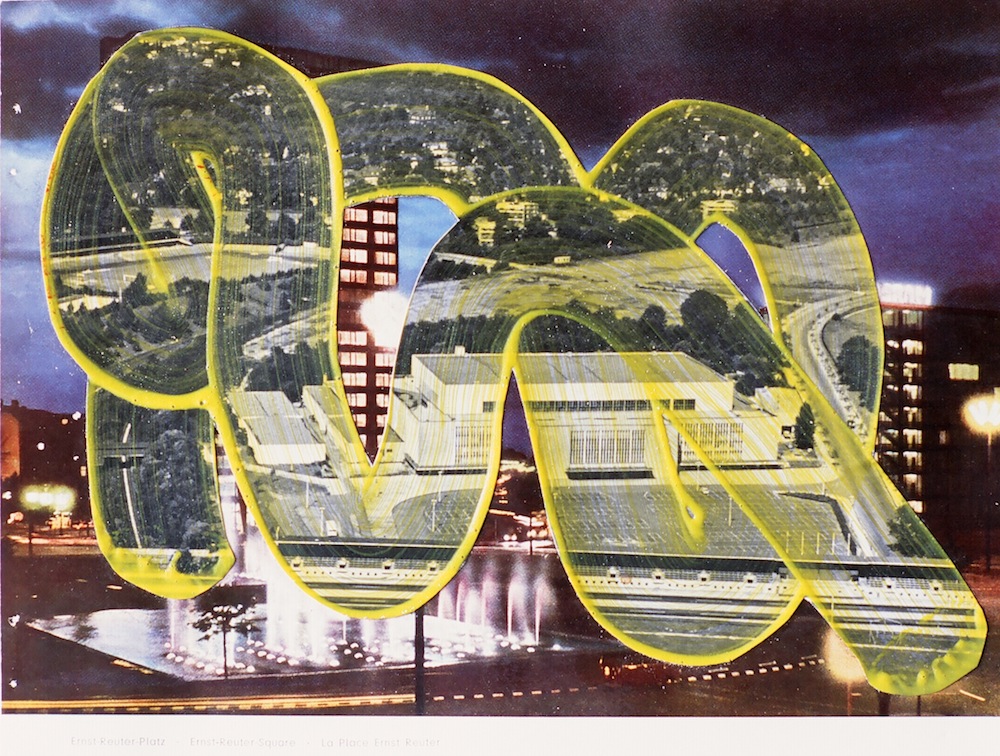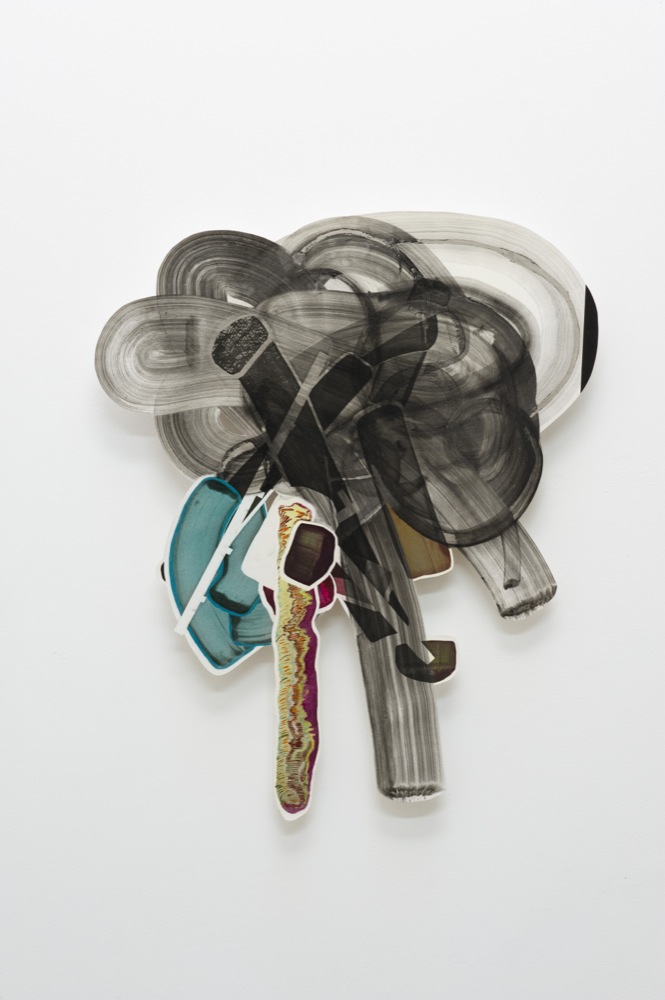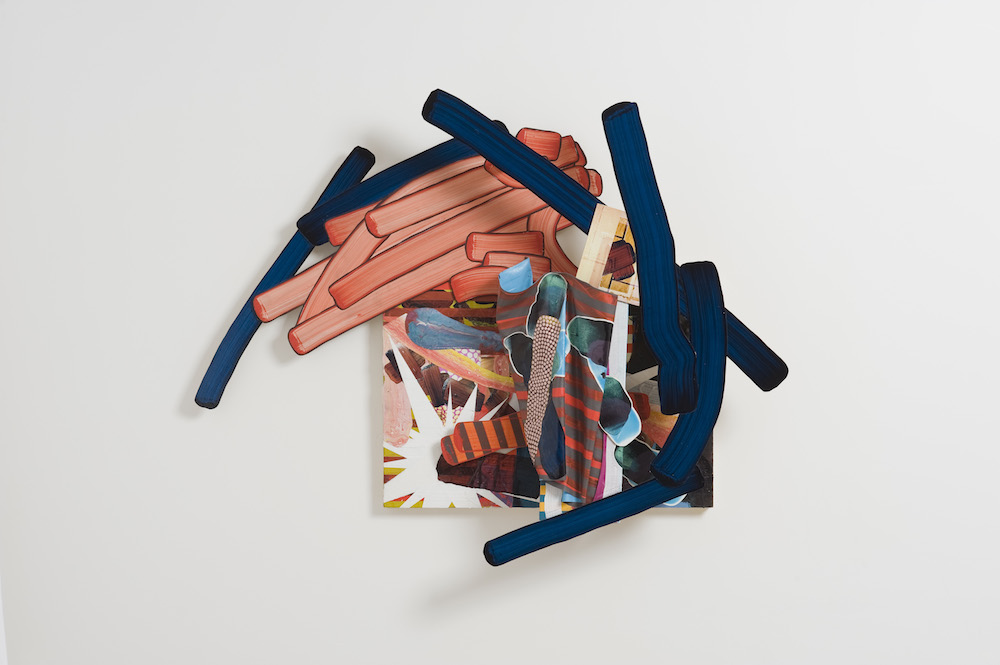
Artist Interview – Wil Murray: ‘Please Boss Remember Me’
Art, Art News, Artists, Fine Art, InterviewsSusie Pentelow interviews Canadian artist, Wil Murray, to mark the opening of his solo exhibition at Vitrine Gallery in London, UK. Murray’s work is a hybrid of painting and photography that engages in the relationship to time and the object.
ZOUCH: Your forthcoming solo exhibition at VITRINE Bermondsey Street‚ ‘Please Boss Remember Me’ presents a body of work made over the past two years that includes painting, collage and print works. Having compiled these pieces, what general trends do you see running through your recent practice?

Wil Murray, “Adieu Vielle Europe 5” Collage and acrylic paint, 2013
WIL: This body of work traces the change from an ornate painting practice with collage and photography thrown in to help me see and paint, to an ornate collage practice that mixes painting and photography in both the production of collage materials and in the creation of my work.
ZOUCH: Your painting demonstrates an ongoing investigation into the significance of the abstract mark or gesture. Can you expand on this and how this relates to the medium of photography, which is also very present within your practice?

Wil Murray, ‘Employee Of The Month: February’, Oil on Silver Gelatin Print, 2014
WIL: I’ve tried to emancipate the paint stroke in order to see what it is, or what it could be. This has developed into a kind of alienated or neurotic method to make marks that become the subject of multiple pieces.
Photographic processes allow me to throw those marks further into the world and address the inevitability of photography. All art gets photographed. So I’ve developed a masochistic relationship to photography. If I know it is going to happen eventually, I start to love any control I can have on when it begins.
ZOUCH: Time and process are intrinsic components in your three-dimensional paintings. How does print facilitate this exploration?
The prints work the other side of painting’s hallmark: the flat rectangle. While the sculptural paintings come out from the flatness. All my processes, leading to print, work toward the flatness from behind it. The prints are crafted from collaging all kinds of source materials with multiple exposure photographs. They mirror the planar construction of the paintings.
ZOUCH: Your compositions are often born of the redevelopment of earlier works. How does this affect your conception of a ‘finished’ work?
WIL: I never re-work a piece, when it is finished it stays that way. But having parts and photographically reproduced sections of finished works around, after they are complete, allows me to put aside virtuosity and remain attached to the process past the self-congratulatory time of finishing.
ZOUCH: Your ‘Adieu Vielle Europe’ series sees you working with found images of landscapes and interiors. What brought about this body of work?
WIL: I searched flea markets and book sales in Berlin for picture books containing photo lithographs of hand-coloured photographs, as source material for the ‘Adieu Vielle Europe’ collages. Much of the stuff you find at flea markets comes from sellers who buy up things after people die, so you could say this series was brought about by the death of lonely people and the systems that disperse what they had accrued.
ZOUCH: The titles of your pieces play an important role in the way we approach and read them as viewers. Is language an important component to your practice?

Wil Murray, ‘Why Are You Looking Up Here The Yoke Is In Your Hand’, Acrylic & Photo on Board, 2013
WIL: It is central to my practice. Titles are a chance to deal in language directly and offer a few clues to my process. Not to say the titles are instructional, but rather they are structured in a similar manner to the work in order to offer some insight in a form shared by me and the viewer.
‘Please Boss Remember Me’ runs from 7 March –12 April 2014 at VITRINE Bermondsey Street, 183 – 185 Bermondsey Street, London SE1 3UW . For more information, visit Vitrine Gallery.






















